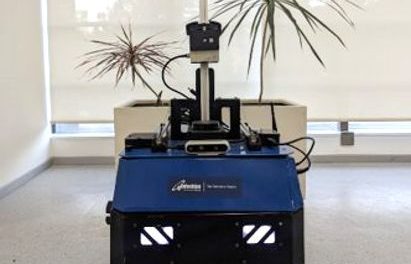Neli Ivanova, sales manager, Industrial Equipment at Siemens Financial Services in the UK , discusses how leveraging the data gathered by the Internet of Things (IoT) can make predictive maintenance and product optimisation possible, and how original equipment manufacturers (OEMs) can help customers to reap the benefit.
The UK is the 9th largest manufacturer in the world by output.[1] 45% of all UK exports come from the manufacturing sector, equating to a total of £275bn.[2] As a central pillar of the UK economy, the manufacturing industry relies upon technological innovation to remain competitive in the global market. The introduction of the Internet of Things (IoT), in particular, has propelled industry growth by making production processes more efficient, reducing operating cost and machine downtime and encouraging innovation and investment in the industry.[3]
What does IoT mean to manufacturers?
For manufacturers, the biggest source of value in manufacturing IoT is in the vast amounts of data to be collected and analysed by IoT devices.[4] What drives process improvement and cost reduction is the ability to analyse and utilise the collected data intelligently. Such data can automate decision-making making it faster than humans could ever achieve. For example, data analysis can manage human assets to minimise changeovers and idle time throughout the production unit.[5]
Other applications of IoT include using machine-learning to hone production levels in real-time without human intervention.[6] This application can be stretched even further to incorporate data outside the factory, such as real-world consumer use of products, to improve processes.[7] This enables more accurate and cost-effective forecasting, which is particularly beneficial for manufacturers of seasonal or perishable goods.[8] Similarly, the ability of machines to perform predictive analytics, helping to prevent downtime and optimise performance, is of great potential value to manufacturers.
What benefits can manufacturers derive from predictive maintenance analytics?
The shift from reactive to predictive maintenance, prompted by fault detection, requires advanced machine learning capabilities. This is because it usually employs sound and vibration analysis to detect if a machine is working outside of normal conditions. This process involves examination of thousands of data points from multiple sensors in order to evaluate what might affect the functionality of a machine.[9]
With the right data analytics tools, the advantages of predictive maintenance are substantial. For instance Siemens’ cloud-based IoT operating system, MindSphere, analyses real-time digital data streams from equipment and alerts manufacturers to impending faults that can’t be identified by humans. These could be vibration indicators, or product quality starting to reach the boundaries of acceptable quality.
By intelligently combining data analytics and predictive maintenance, technicians will know in advance what is wrong when fixing a problem and what parts may need replacing. This means they will spend less time diagnosing the problem and waiting for appropriate parts to be delivered, and instead can use their time and expertise to repair the machine.[10]
In addition, predictive maintenance can prevent more serious issues occurring. For example, machines have the capability to slow production if there is a risk of overheating. Performance optimisation is another key area in which value can be created through the predictive use of IoT data analytics. Similar to running maintenance diagnostics, performance data can help create more efficient manufacturing operations.[11] By analysing real-time data across the factory floor, decision-makers and machines can tweak processes in order to achieve greater efficiency and minimise waste.[12]
How can finance support OEMs and their customers’ transition to IoT and data analytics?
The fast pace of innovation in manufacturing IoT means manufacturers are under growing pressure to invest in constantly evolving equipment and technology upgrades. This requires significant capital, which is often tied-up in operational and staff costs.
This gives OEMs the opportunity to create new business opportunities for themselves and for their customers. OEMs are increasingly using their knowledge of IoT and data in order to provide their products as a service.[13] By integrating asset finance and specialist finance solutions into their overall offering, OEMs can harness the benefits of IoT while helping their clients invest in new technology. This combined approach creates unique business models enabling OEMs to act as service providers and financiers.
By working with a specialist financier, OEMs can offer financing solutions such as leasing and pay-for-outcomes agreements whereby the savings or gains made possible by newly acquired technology funds the customer’s monthly repayments. Such financiers have an in-depth understanding of the sector and are able to assess the future value of equipment, and its practical application in the sector, enabling them to tailor all-encompassing financing packages to a company’s specific needs. They will consider the cost savings and/or expected benefits for the term of the agreement and factor that into the financing arrangement. In the case of tools such as MindSphere, the data streams can also be used to align the cost of the technology with the benefits it brings such as improved productivity, operating cost savings, energy efficiency and access to new markets.
In this way, manufacturers gain immediate access to the latest equipment and technology, without having to commit scarce capital or use traditional lines of credit. Financing arrangements have the potential to incorporate other costs such as installation, as well as introducing the flexibility for future affordable equipment upgrades in line with technology developments, helping manufacturers to make a sustainable investment and gain an important competitive advantage.
Data has so far mainly been used in a reactive capacity, even though the real value to IoT is in pre-emptive data interpretation and analysis. Offering new equipment and technology as a service with flexible and tailored financing can enable OEMs to deliver intelligent solutions to their customers that cater to their specific needs. As such manufacturers can invest in the newest equipment and technology sustainably, make use of data analytics, and enter the next stage of Industry 4.0.
[1] EEF Limited, UK Manufacturing 2018/19, The Facts, https://www.eef.org.uk/campaigning/campaigns-and-issues/manufacturing-facts-and-figures
[2] EEF Limited, UK Manufacturing 2018/19, The Facts, https://www.eef.org.uk/campaigning/campaigns-and-issues/manufacturing-facts-and-figures
[3] The Manufacturer, IoT in manufacturing market to grow annually by 29%, 10.11.2017, https://www.themanufacturer.com/articles/iot-in-manufacturing-market-to-grow-annually-by-29/
[4] Machine Metrics, The True Business Value of IoT in Manufacturing, 03.01.2019: https://www.machinemetrics.com/blog/the-true-business-value-of-iot-in-manufacturing
[5] Machine Metrics, The True Business Value of IoT in Manufacturing, 03.01.2019: https://www.machinemetrics.com/blog/the-true-business-value-of-iot-in-manufacturing
[6] Machine Metrics, The True Business Value of IoT in Manufacturing, 03.01.2019: https://www.machinemetrics.com/blog/the-true-business-value-of-iot-in-manufacturing
[7] Machine Metrics, The True Business Value of IoT in Manufacturing, 03.01.2019: https://www.machinemetrics.com/blog/the-true-business-value-of-iot-in-manufacturing
[8] Machine Metrics, The True Business Value of IoT in Manufacturing, 03.01.2019: https://www.machinemetrics.com/blog/the-true-business-value-of-iot-in-manufacturing
[9] Losant, Using IoT and Machine Learning for Industrial Predictive Maintenance, 22.08.2017: https://www.losant.com/blog/using-iot-and-machine-learning-for-industrial-predictive-maintenance
[10] Industrial IoT Series, Predictive Maintenance, 25.07.2018: https://www.industrialiotseries.com/2018/07/25/predictive-maintenance/
[11] Industrial IoT Series, Predictive Maintenance, 25.07.2018: https://www.industrialiotseries.com/2018/07/25/predictive-maintenance/
[12] The Manufacturer, IoT, connectivity & data analytics are transforming manufacturing, 09.03.2018: https://www.themanufacturer.com/articles/iot-connectivity-data-analytics-are-transforming-manufacturing/
[13] Forbes, Machines As A Service’: Industry 4.0 Powers OEM Aftermarket Revenue Growth, 13.08.2018:



